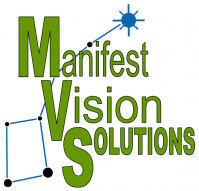Program Management Dominos
November 15, 2012 Leave a comment
How many times have IT organizations spoken about application rationalization or infrastructure refreshes? Over time many solutions have been created to solve the issue of the day or take the business in a different direction. Once created these applications never die, hence the application rationalization program. And once in place, refreshing the infrastructure becomes a challenge since you don’t know if the existing application will run on the new hardware or version of the operating system. But I have often heard these two discussions being held independently without concern to the impacts of one upon the other or more importantly the business implications.
What about the strategic planning process and the resulting action plans and allocation of resources? How often are the dependencies between the strategies addressed in order to make the action plans actionable? I have often seen the strategies split between different executives to deliver without understanding the interdependencies; often resulting in increased costs, unnecessary issues down the road or complete failure of the strategy.
In my mind, this is one of the differences between projects and programs. Programs ensure that the interdependencies are recognized; that the dominos are set up so they fall down in the right order.
I remember one really effective yearly planning process. We covered a wall with the outline of a Gantt chart with the strategies and associated 70+ candidate projects down the left side, each with an estimated duration and start date. Then each functional group was given a different color of small post-its. For each project, each function put a post-it in every month where their organization would be required to participate. Talk about being able to visually see resource contention! It also generated a lot of questioning and discussion to really understand what each project was trying to accomplish. This caused some projects to be combined and identified dependencies which generated start date and duration changes. This planning process yielded a set of seven programs, all of which were successfully delivered that year; the right dominos got selected, set up in the right places and were knocked over with precision!
Something similar happened with an infrastructure refresh program. Based on business need as to which applications were not meeting performance requirements, a set of applications were identified for refresh (the throw more hardware at it approach). Matched to this was the set of outstanding requests against each application, its part in the business process flow and any existing upstream or downstream projects. As a function of this, each was evaluated for refresh, upgrade, replacement or retirement. By setting up the dominos in this order we were able to create a program that was business driven and accomplished both application rationalization and infrastructure refresh.
How have you been setting up your program dominos?
© Ellen Terwilliger 2012





